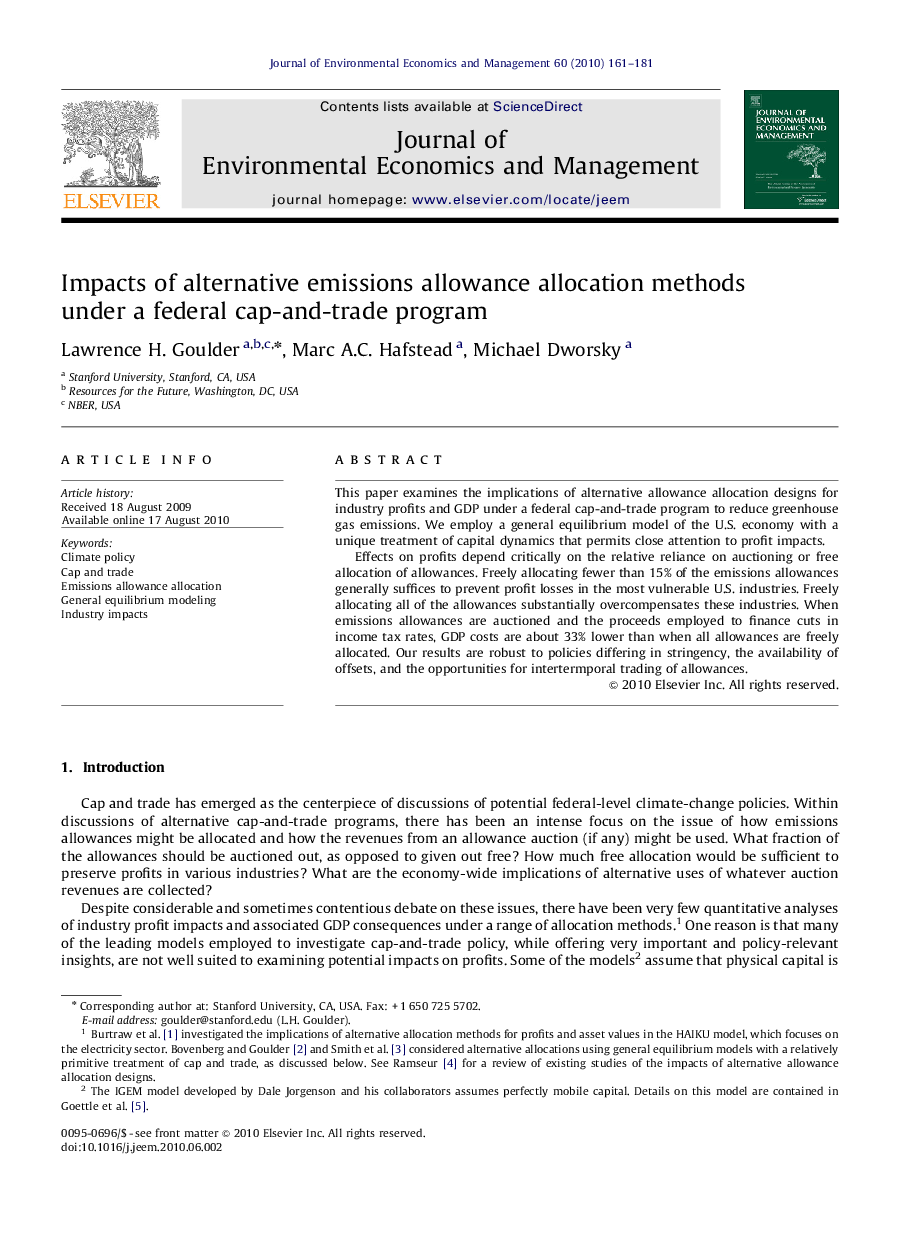| Article ID | Journal | Published Year | Pages | File Type |
|---|---|---|---|---|
| 959273 | Journal of Environmental Economics and Management | 2010 | 21 Pages |
This paper examines the implications of alternative allowance allocation designs for industry profits and GDP under a federal cap-and-trade program to reduce greenhouse gas emissions. We employ a general equilibrium model of the U.S. economy with a unique treatment of capital dynamics that permits close attention to profit impacts.Effects on profits depend critically on the relative reliance on auctioning or free allocation of allowances. Freely allocating fewer than 15% of the emissions allowances generally suffices to prevent profit losses in the most vulnerable U.S. industries. Freely allocating all of the allowances substantially overcompensates these industries. When emissions allowances are auctioned and the proceeds employed to finance cuts in income tax rates, GDP costs are about 33% lower than when all allowances are freely allocated. Our results are robust to policies differing in stringency, the availability of offsets, and the opportunities for intertermporal trading of allowances.
